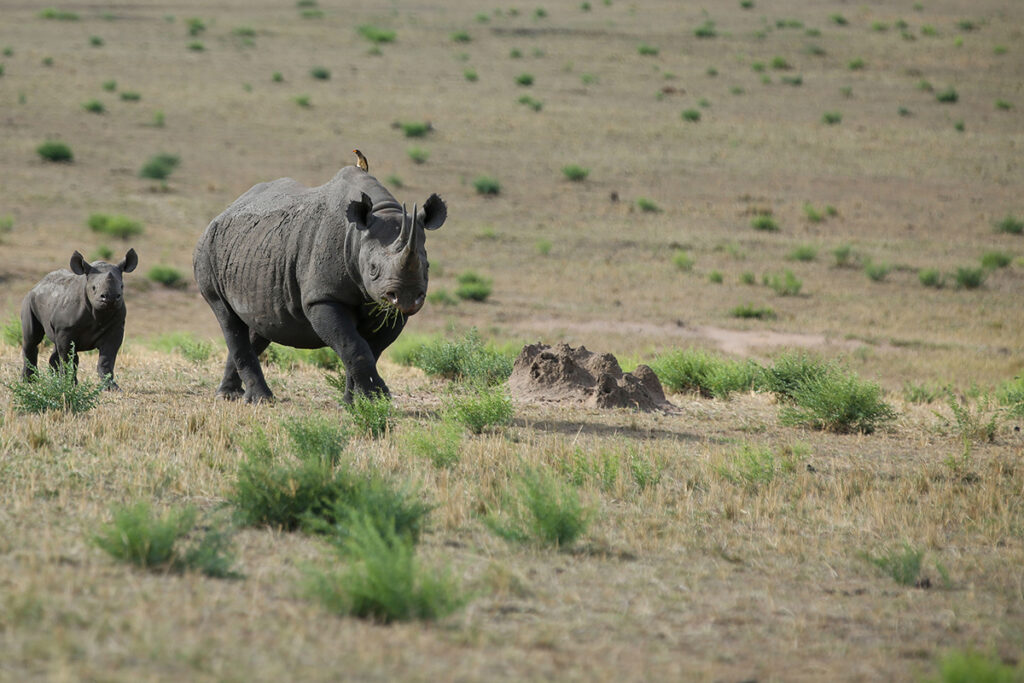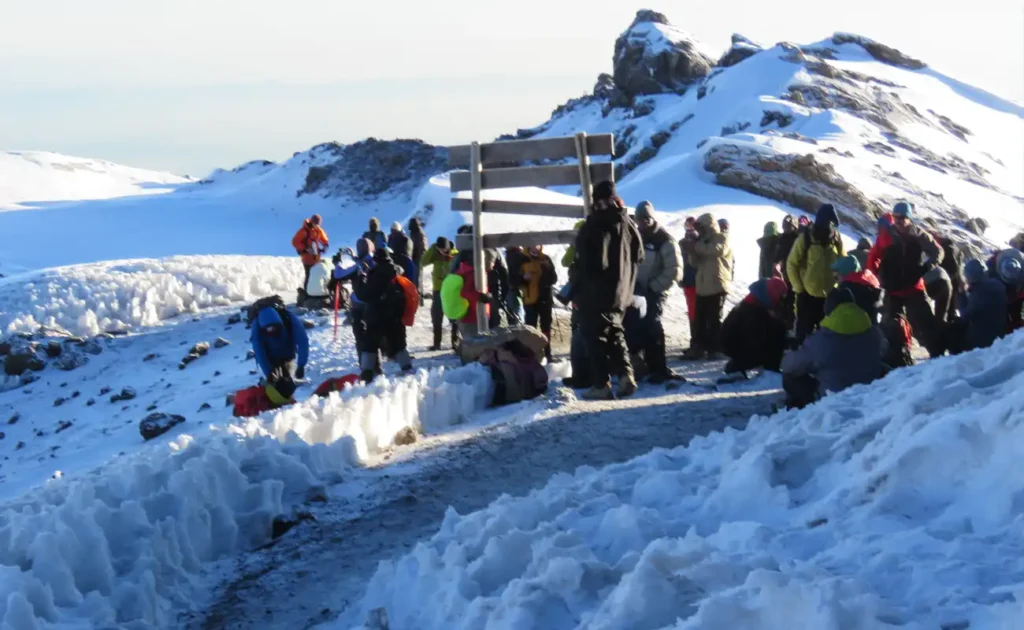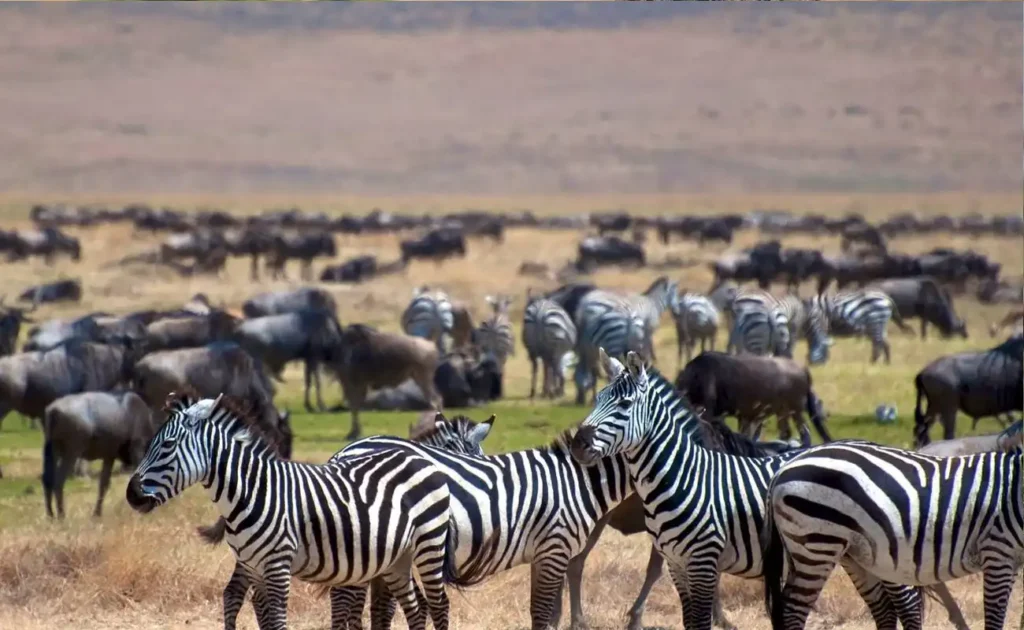Not many people know that the shoulder seasons in Tanzania offer some of the most breathtaking safari experiences with fewer crowds and lower costs. During these months, the landscape is lush, and wildlife becomes more active, making sightings more frequent and diverse. It’s a hidden gem that even experienced safari-goers often overlook.
The shoulder season, traditionally spanning April to May and November, offers an ideal blend of affordability and adventure. During these periods, travelers can still witness the Great Migration without the bustling crowds, providing a more intimate experience. Statistics indicate a significant drop in prices for accommodations and tours, offering unparalleled value without compromising on the quintessential Tanzanian safari experience.

Defining the Shoulder Season in Tanzania
In Tanzania, the shoulder season is a magical time for safaris. These months fall between the high and low tourism periods. Running from April to May and November, they offer unique experiences. Visitors can enjoy more peaceful game drives with fewer tourists. According to here is the article, the cost of safaris during these times is more budget-friendly than during the peak season.
Weather during the shoulder season is quite unpredictable yet exciting. The landscapes are often greener due to occasional rains. Animals, like elephants and lions, are often seen closer to water sources. This provides amazing photo opportunities for wildlife enthusiasts. Lodges and camps often offer special promotions and discounts, making it an enticing choice for many travelers.
For nature lovers, shoulder season presents the chance to witness both migration and calving events. Wildebeests and zebras make their way through parts of the Serengeti. Bird watchers also find this period fascinating. Various migratory birds appear, adding vibrant colors to the skies. According to the article, this is a great time for families interested in educational experiences with nature.
Travelers looking for a balance between cost and quality should consider the shoulder season. Many express how the fewer crowds enhance their safari adventures. The local communities are more accessible for cultural interactions. Visitors can participate in local traditions and learn about Tanzania’s rich heritage. Overall, the shoulder season is a gem waiting to be explored by those looking for adventure.
What is the Shoulder Season and When Does it Occur?
The shoulder season in Tanzania is a time between peak and low tourist seasons. It occurs twice a year, from April to May and in November. During these months, travelers can experience many benefits. For instance, safari locations are less crowded. This allows for more personal and relaxed wildlife viewing.
Weather in the shoulder season is unique and contributes to the lush environment. In April and May, occasional rains create vibrant landscapes. November, on the other hand, brings short rains, offering a different kind of beauty. These conditions help attract animals near water sources. This makes game viewing quite thrilling.
Tour operators and camps often use the shoulder season to offer special deals. This means travelers can find luxury accommodations at lower prices. Visitors can choose from various safari packages suited to their needs. Engaging with local guides is a fantastic way to learn about the region. The shoulder season offers excellent value for those ready to explore.
Planning a visit during this time provides a more intimate connection with nature. Wildlife behaves differently without large tourist crowds. This period is perfect for capturing incredible photos. Experiencing the serene beauty of Tanzania’s landscapes becomes more personal. Ultimately, the shoulder season offers a different yet rewarding safari experience.
Advantages of Planning a Safari During the Shoulder Season
Planning a safari during the shoulder season brings several benefits. One major advantage is the reduced crowd size at major parks. This means you can enjoy a more personal and tranquil experience. Wildlife is more visible since animals move freely without a large number of tourists. Seeing them up close becomes much easier and more rewarding.
Price is another big factor that makes shoulder seasons appealing. Accommodations and tour packages often cost less during these months. This allows budget-conscious travelers to experience luxury lodges at affordable rates. People looking for value find great deals. It’s a win-win situation without compromising on quality.
Weather is also favorable in the shoulder seasons, adding to the safari’s charm. While rain may be expected, it transforms the landscapes into lush green oases. This vibrant scenery enhances photographic opportunities. Moreover, the rain makes water sources abundant, attracting more wildlife. Thus, capturing dynamic and colorful images becomes possible.
Lastly, the shoulder season allows for more interaction with local communities. This provides insights into local culture and traditions. Visitors may have the opportunity to attend cultural events or festivals. Engaging with locals enriches the travel experience. The benefits of the shoulder season extend beyond the wildlife to the heart of Tanzanian culture.
Weather Conditions and Wildlife Sightings in Shoulder Season
The shoulder season in Tanzania offers unique weather patterns that enhance the safari experience. Occasional rains during April, May, and November create lush green landscapes. These rains bring life to the region, transforming dry areas into vibrant settings. With cooler temperatures, exploring the parks becomes more comfortable. Travelers often find this refreshing compared to the intense heat of the peak seasons.
Rainwater in the shoulder season creates temporary waterholes, attracting diverse wildlife. You might find elephants, giraffes, and antelopes gathering around these areas. This makes for incredible wildlife sightings. The greenery provides perfect camouflage for many animals, adding excitement to game drives. Spotting elusive creatures often becomes a thrilling challenge.
Birdwatchers find the shoulder season particularly delightful due to migratory patterns. Various bird species come back to the region, adding color and diversity to the skies. Some rare species can be seen flitting among the trees. This is a paradise for those with a keen eye for avian life. Observing these birds adds another dimension to the safari.
During this time, predators like lions and leopards can be spotted more frequently. They move around freely without the intense human presence. Watching their interactions becomes a highlight of the trip. Such sightings provide a deeper understanding of the wildlife dynamics. This makes the shoulder season a favorite for photography enthusiasts.
While the weather is a bonus, the fewer tourist numbers also allow for more memorable experiences. Parks are less crowded, so travelers can enjoy unhurried game drives. This increases the chances of witnessing rare sights. The tranquil environment allows for a deeper connection with nature. Thus, the shoulder season offers a rich and rewarding experience for wildlife enthusiasts.
Comparative Analysis of Costs: Shoulder Season vs Peak Season
Traveling during the shoulder season in Tanzania is often much more budget-friendly than peak seasons. Prices for accommodations significantly drop, making luxury lodges within reach for more visitors. Many lodges and camps offer discounts and special packages during this time. This makes it an attractive option for families and budget-conscious travelers. The savings do not affect the quality of the safari experience.
A table below provides a glimpse into cost differences between shoulder and peak seasons:
| Season | Accommodation Cost (per night) | Safari Package Cost |
|---|---|---|
| Shoulder Season | $150 – $300 | $1,000 – $2,500 |
| Peak Season | $300 – $600 | $2,500 – $5,000 |
In peak seasons, high demand results in increased prices for everything from guided tours to meals. Tourists compete for spots in popular safari parks, driving up costs. However, the shoulder season allows for more pricing flexibility. This extends to airfare, where lower costs are typically found. Airfare deals can enhance overall savings on a trip.
Another benefit is the availability of preferred lodging and tour packages, which is easier to secure during shoulder months. Fewer tourists mean more choices and less competition for top amenities. Travelers can enjoy personalized services without feeling rushed. This adds significant value to the overall safari experience. For many, the financial savings are second only to the enriched experiences they gain.
While the adventure is still thrilling during the peak season, the shoulder season offers a unique opportunity for a more cost-effective and serene encounter with nature. This is why many avid travelers opt for these magical months. Whether you’re a first-time visitor or a seasoned safari-goer, the shoulder season in Tanzania is a smart choice for both adventure and savings.
Tips for Travelers: Making the Most of a Shoulder Season Safari
To make the most of your shoulder season safari in Tanzania, plan your itinerary carefully. Research the parks and reserves you intend to visit. This ensures you maximize your time and see the best wildlife possible. Consider visiting multiple parks to experience diverse landscapes and habitats. Early bookings can also secure the best accommodations and guides.
Packing the right gear is crucial, particularly for unpredictable weather. Make sure to include waterproof jackets and lightweight clothing. A good pair of binoculars and a quality camera are must-haves. Also, bring layers to adapt to varying temperatures throughout the day. Proper gear enhances your comfort and experience on game drives.
- Waterproof Jackets
- Lightweight Clothing
- Binoculars
- Quality Camera
- Layered Clothing
Engage with local guides and communities to enrich your safari experience. Local guides offer invaluable insights into wildlife behavior and the ecosystem. Their knowledge can lead to better sightings and understanding of the environment. Participating in community-led tours allows you to learn about local culture. This adds depth to your overall safari adventure.
Lastly, remain flexible and open to unexpected experiences. Wildlife is unpredictable, and some of the best moments happen spontaneously. Patience is key; sometimes waiting a few extra minutes can lead to incredible wildlife interactions. Keep an open mind and enjoy the journey. These moments make your shoulder season safari unforgettable.

Frequently Asked Questions
Discover the answers to the most commonly asked questions about planning a safari during the shoulder season in Tanzania. These insights will help you make the most of your safari adventure.
1. What is the best time to see the Great Migration in Tanzania?
The best time to see the Great Migration in Tanzania is from July to September. During these months, the wildebeests and zebras cross the Grumeti and Mara rivers, offering spectacular views. However, visiting during the shoulder seasons in April-May and November presents fewer crowds while still enjoying the migration events.
In the shoulder season, the herds are spread across the Serengeti, making sightings possible without the high-season rush. It’s a unique opportunity to observe the animals in a more tranquil, lush environment due to the earlier rains and to take memorable photos without interference from other tourists.
2. Can I expect good wildlife sightings during the rainy shoulder season?
Yes, wildlife sightings during the rainy shoulder season can be excellent. The rains cause the grass to grow, attracting herbivores like zebras and antelopes to lush grazing areas. Consequently, predators like lions and cheetahs are also more active, following their prey.
The concentration of animals around water sources increases during the shoulder season, making it easier to spot diverse species. This period also presents a fantastic opportunity for birdwatching, with many migratory birds arriving, adding to the breathtaking scenery and biodiversity.
3. What type of clothing should I pack for a shoulder season safari?
For a shoulder season safari, pack light, breathable clothing layered with waterproof outerwear. The weather can be unpredictable, with occasional rains and varying temperatures. Include a lightweight raincoat, a warm sweater for cooler mornings and evenings, and comfortable walking shoes.
Don’t forget essentials like a wide-brimmed hat for sun protection, insect repellent, and a pair of binoculars for wildlife spotting. Always opt for neutral-colored clothing to blend in with the environment, making wildlife encounters more natural and less intrusive.
4. Are safari lodges and camps open during the shoulder season?
Yes, many safari lodges and camps remain open during the shoulder season, often offering discounts and special packages. These off-peak deals can provide luxurious accommodations at a more affordable price, allowing travelers to enjoy top-notch amenities.
Additionally, with fewer guests, the service is often more personalized and attentive. You can enjoy a quieter, more exclusive experience, having common areas and game drives with less crowding and more privacy to appreciate the stunning landscapes and wildlife.
5. How does the shoulder season impact safari photography opportunities?
The shoulder season offers unique and stunning photography opportunities due to the lush, green landscape and dramatic skies created by the rains. Wildlife tends to gather around waterholes and open areas, providing excellent chances for capturing dynamic animal interactions.
Moreover, the softer, diffused light during overcast days minimizes harsh shadows, resulting in beautiful, evenly lit photos. The vibrant colors of blooming flowers and the newly green savannah backdrop enhance the composition and richness of your wildlife photos, making each shot uniquely memorable.



